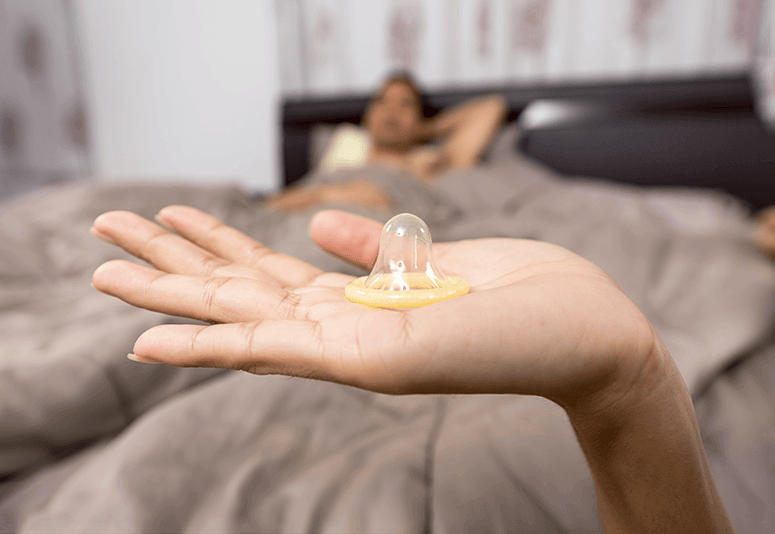What it’s like getting birth control in the Philippines
I couldn’t stop smiling the first time I took Plan B — which wasn’t even really Plan B since that’s not available locally, but an alternative involving eight oral birth control pills called the Yuzpe Method. It felt good to look for information and find it on a website I knew I could trust. It felt good that I was able to buy the pills; that I finished the doses with nothing going wrong.
I was anticipating the worst because sex always starts to feel punitive at some point, whether by way of a missed period or pangs of shame. It felt good to exercise the very little bodily autonomy I have as a young woman in the Philippines.
Then the side effects kicked in, along with the fear: is it normal that I still feel nauseated three days later? What if it didn’t work? I was so desperate for advice but also so afraid to seek it. What if my web search history got leaked, or a friend tells a friend of a friend I took Plan B?

It makes me laugh now, how I spend so much time and energy studying and writing about sex but remain clueless about the most basal of sexual encounters. I think I study it precisely because I’m still so terrified of it; maybe if I know it from a historical, biological, psychological, or sociological dimension, then it would feel like less of a big deal. More normal, finally.
Or I could simply open up about it, breaking away from the culture of silence that renders female sexuality practically nonexistent; making the invisible visible. So I asked: what is it like getting birth control in the Philippines?
(Note: Names have been changed for interviewees who requested to be anonymous).
You have to pay closer attention to your body. Different bodies, different reactions.
Male Condoms
These are thin pouches usually made of latex that trap sperm during vaginal intercourse. They are effective in preventing both unwanted pregnancies and STDs.
Why condoms? Janine, an 18-year-old from Manila, says this is the birth control method their age group is most familiar with. It’s also the easiest to access since it’s often available in convenience stores.

Getting it: When Janine and their partner began discussing sex, they did extensive research on websites like Planned Parenthood. Most female condom users I spoke to said their male partner buys it; 22-year-old Benzopyrene, however, buys her own. She was anxious about being judged the first time, but she got used to it eventually.
The actual experience: Cielo, a 21-year-old from Cavite, deems condoms, if used properly, the most harmless method since it doesn’t have any side effects. “Any discomfort/dissatisfaction I get from using condoms stems from partner’s comments that it doesn’t feel as good for him,” she said.
Any advice? Benzopyrene suggests reading instructions thoroughly or watching how-to videos if it’s your first time. “And if matagal yung sex, pwedeng gumamit ng bagong condom especially if feel niyo na dry na yung unang condom. Okay lang na maubos niyo yung isang box (3 packets) in one time. Huwag sana manghinayang.”
Birth Control Pills
These are daily pills containing hormones. It is also commonly used to treat conditions like endometriosis or polycystic ovary syndrome (PCOS).
Why pills? Most pill takers I talked to were taking pills prescribed by their OB-GYN, usually for their PCOS.

Getting it: Kiana, a 27-year-old from Pasig, got her pills from Dima online store and local pharmacies. “I used to think na need ko ng prescription to get these but no one's asked me for one.” Catherine, a 21-year-old with PCOS, went to the OB-GYN on her own and said she found lots of helpful information online.
The actual experience: Some side effects Catherine experienced in her first few weeks were nausea, heavier and more painful periods, breast tenderness, a squeezing sensation in her lower abdomen, and clearer skin. The pain subsided after a while, and she noted that the pills “did not get in the way” of sex.
Any advice? It’s always best to first consult your doctor. Catherine adds, “You have to pay closer attention to your body. Different bodies, different reactions.”
Yuzpe Method
An emergency contraceptive method where eight birth control pills are taken in two doses over 12 hours. It’s most effective 72 hours after unprotected sex, though it’s not advised to do this regularly.
Why Yuzpe? Two of Benzopyrene’s friends recommended this when they found out she had unprotected sex. She heeded their advice “for peace of mind.”
Getting It: Cielo messaged Likhaan Center for Women’s Health online to gather information on what brand of pills to use, where to get them, how many to take, and how often. “My experience was okay, I got the answers I needed. Also followed up after a few days when I unexpectedly bled, and they patiently assisted and assured me naman that it could be hormonal since it was my first time.” As for getting the pills, it was very discreet since she just got them from a local drugstore.
The actual experience: Benzopyrene got very dizzy and nauseous, but since Plan B pills are currently unavailable locally, she said she had to make do with what she had.
Any advice? Benzopyrene advises doing Yuzpe only during emergency cases and not regularly. It’s also best to do it immediately since it’s only effective for up to 72 hours.
IUD
A small T-shaped device put into your uterus. You can get either a hormonal or copper IUD, which are both long-term and reversible.
Why IUD? 27-year-old Arielle sees her copper IUD as a “one-and-done situation” since it lasts for 10 years. She had been researching it but was finally convinced when two of her friends got it: “Seeing that they were fine, that it was effective, and that I had people I could trust to ask for advice strengthened my resolve.”
Getting it: Arielle’s best friend referred her to an OB-GYN. She initially wanted a hormonal IUD but found it was out of her budget, since no HMO in the country had benefits for birth control. The copper IUD insertion felt like a pinch, like “a menstrual cramp that lasts three seconds and then you’re done!” She experienced intense pain afterward, however, to the point of having difficulty standing.
The actual experience: Arielle has bad cramps to begin with, and during the first few months, this was made worse by the IUD. She adds, “The bleeding was alarming, and I would fill up an entire overnight menstrual pad in an hour or two.” Her cycle returned to normal soon after, occasionally experiencing discomfort from cramps that eventually subsided.
Any advice? “You need to set aside some money for it, not just for the procedure, but for aftercare too. And you need to be physically and mentally prepared for whatever happens,” Arielle says. If you do go with the copper IUD, she suggests getting ready for a considerably heavier flow.
Implant
A matchstick-sized rod inserted into your forearm that releases hormones. It lasts for around 3-5 years.
Why implant? Fran, a 20-year-old who used to take pills, and Nat, a 22-year-old who used to get injectables, both switched to implants for its convenience and long-term effectiveness.
Getting it: Both Fran and Nat found online posts from women getting their implants for free at the Commission on Population (PopCom) in Mandaluyong. There were only a couple of other people in line, and they were all oriented on the side effects and the procedure. They were given health checkup forms and consent forms. The procedure took about five minutes: an anesthesia shot was administered, which they said was the only painful part, then the implant was inserted.
The actual experience: Side effects were very minimal: Fran said their periods are longer but lighter, while Nat experienced spotting during the first few weeks. The implant is also discreet aside from the bruising in the arm that, in Nat’s case, lasted for around three weeks.
Any advice? Both Fran and Nat highly recommend implants, though it’s still best to consult with a doctor. According to Fran, PopCom “does not remove implants unless you have a medical certificate. So think it through first, research about the side effects, and get yourself checked.”
Tubal Ligation
A surgical procedure that permanently prevents pregnancy through the cutting or closing of one’s fallopian tubes.
Why ligation? DK, a 36-year-old parent of two from San Juan, got ligated as they wanted a more permanent form of birth control.

Getting it: DK scheduled it alongside their second C-section. Their OB-GYN supported their decision, but some of the nurses discouraged them from pushing through with it. “Apart from the usual waiver and consent form I had to sign, they talked to me personally about how I might change my mind in the future.”
The actual experience: “Because I had it alongside my second C-Section, I didn't experience anything outside of what was expected of the C-section procedure,” DK says, adding she’s “always delighted to have gotten it.”
Any advice? DK recognizes that a ligation is more expensive and requires a longer healing time. “A ligation, I feel, would be best if you already had kids and can do it during a childbirth procedure to minimize health-related complications.”
***
While having these conversations was extremely helpful, nothing beats consulting with a trusted health professional to know what birth control method is best for you. Everything here, after all, is based on their personal experience, which may be entirely similar or entirely different from yours.


